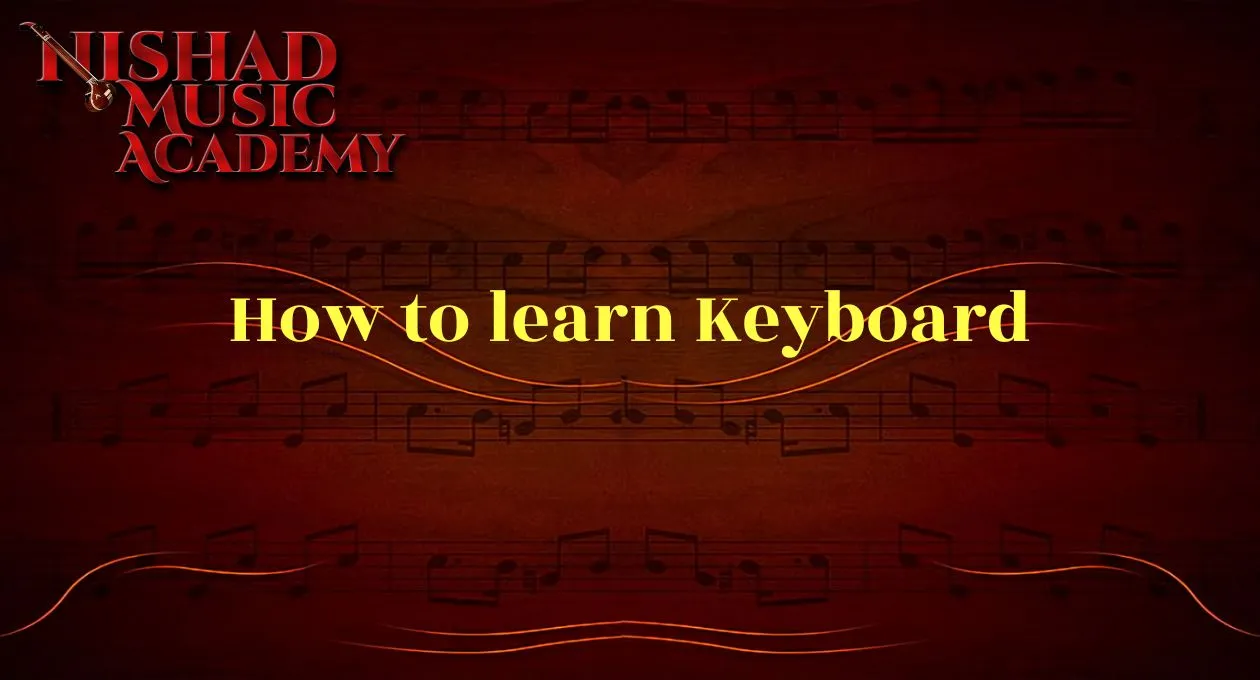Learning to play the keyboard is a rewarding journey that offers a gateway to expressing yourself through music. How to learn Keyboard Here’s a structured approach to help you get started.
1- Acquire a Keyboard:
Choose the Right Keyboard: Consider factors such as the number of keys (commonly 61, 76, or 88 keys), touch sensitivity (weighted or unweighted keys), and additional features like built-in sounds, rhythms, and recording capabilities.
Purchase or Rent: Invest in a keyboard that suits your budget and learning needs. You can start with a basic keyboard and upgrade as you progress.
2- Familiarize Yourself with the Keyboard:
Keyboard Layout: Learn the layout of the keys, including the white and black keys, and understand the concept of octaves.
Built-in Features: Explore the various features and functions of your keyboard, such as different sounds (piano, organ, strings, etc.), rhythms, and effects.
3- Learn Basic Music Theory:
Note Names: Familiarize yourself with the names of the notes on the keyboard, including the musical alphabet (A, B, C, D, E, F, G) and sharps/flats (black keys).
Scales and Chords: Learn about scales (major, minor, pentatonic, etc.) and basic chord structures (major, minor, diminished, augmented, etc.).
4- Develop Proper Technique:
Hand Position: Practice proper hand positioning and posture while playing the keyboard. Keep your wrists relaxed and level with the keyboard.
Finger Placement: Assign each finger to specific keys and practice using the correct fingers for different notes and chords.
Touch Sensitivity: Learn to control dynamics (volume) by varying the pressure applied to the keys, especially on keyboards with touch-sensitive keys.
5- Start with Basic Exercises and Warm-ups:
Finger Exercises: Practice simple finger exercises and warm-ups to improve finger strength, dexterity, and coordination.
Scale Practice: Work on playing scales smoothly and evenly across the keyboard in different keys and octaves.
6- Learn Basic Songs and Melodies:
Beginner Songs: Start learning simple songs and melodies that use basic chords and note patterns. Choose songs that you enjoy and are familiar with.
Use Sheet Music or Tutorials: Use beginner-level sheet music or online tutorials to guide your learning process.
7- Study Music Notation:
Sheet Music: Learn to read and interpret sheet music notation, including treble clef and bass clef.
Rhythm and Timing: Understand rhythm notation, time signatures, and rhythmic patterns to play music accurately and in time.
8- Explore Different Styles and Genres:
Experiment: Explore different musical styles and genres, including classical, pop, jazz, blues, rock, and more.
Listen and Analyze: Listen to a variety of keyboard music and analyze the techniques used by different keyboardists.
9- Utilize Learning Resources:
Online Tutorials and Courses: Take advantage of online keyboard tutorials, courses, and instructional videos to supplement your learning.
Books and Methodologies: Explore beginner keyboard books and methodologies that provide structured lessons and exercises.
10- Practice Regularly and Set Goals:
Consistent Practice: Dedicate regular time to practice the keyboard each day, even if it’s just for a few minutes.
Set Goals: Establish specific, achievable goals for your keyboard practice sessions, such as learning a new song, mastering a challenging technique, or improving your improvisation skills.
11- Seek Feedback and Perform:
Feedback: Seek feedback from friends, family, or a music teacher to help you identify areas for improvement and refine your skills.
Performance Opportunities: Look for opportunities to perform in front of others, such as recitals, open mic nights, or playing for friends and family, to gain confidence and experience.
12- Stay Motivated and Enjoy the Process:
Stay Inspired: Stay inspired by listening to music, attending concerts, and learning from other musicians.
Enjoyment: Remember to enjoy the process of learning and making music on the keyboard. Celebrate your progress and the joy of creating music.
By following these steps and staying committed to your practice, you can develop the skills and proficiency needed to become a confident and expressive keyboard player. Enjoy the journey of learning and exploring the vast world of music with the keyboard!
